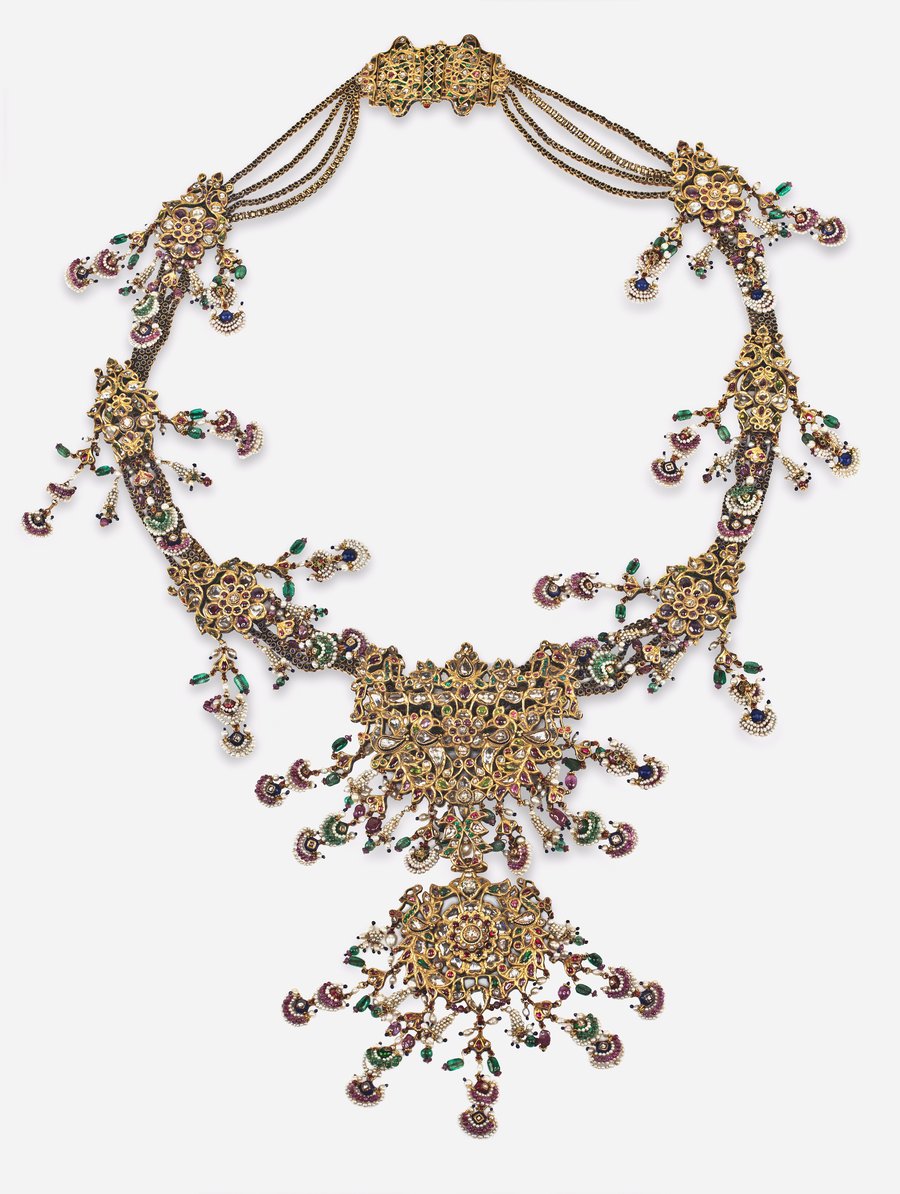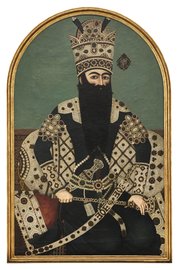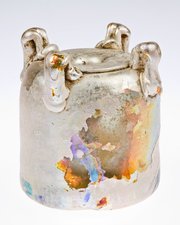
Necklace
Museum of Islamic Art
- Title:
- Necklace
- Production place:
- India
- Date:
- 1850 - 1899
- Period:
- 19th century CE
- Title:
- Necklace
- Production place:
- India
- Date:
- 1850 - 1899
- Period:
- 19th century CE
- Material:
- Diamond, Ruby, Pearl, Emerald, Sapphire, Enamel, Copper alloy, Gilding, Solder
- Technique:
- Gem setting, Kundan, Enamelling, Filigree, Openwork, Gem cutting, Gilding, Soldering
- Dimensions:
- 58 × 33 cm
This magnificent jewellery set includes a necklace and pair of earrings. The necklace is intended to imitate a flower garland; fashioned in an openwork pattern, it is comprised of two large central ornaments, and six smaller ones, each connected by a series of golden box chains. Each ornament is decorated with a combination of floral motifs and peacocks, set in the kundan technique with coloured gems, table cut diamonds, and small suspended pearls. The earrings (known as jhumka) are formed of two dome-like elements decorated en suite, with three strands of small pearls that would have attached the earrings to the hair or a larger head ornament. Flower garlands have been worn in India since ancient times, traditionally used to adorn the hair and ears of brides. This set is believed to have been made for a wealthy bride in Maharashtra, a state in the Western peninsula region of India, where access to fresh pearls was more available. The abundant use of pearls, associated with water and women, were believed to bestow healing powers to its wearer.



